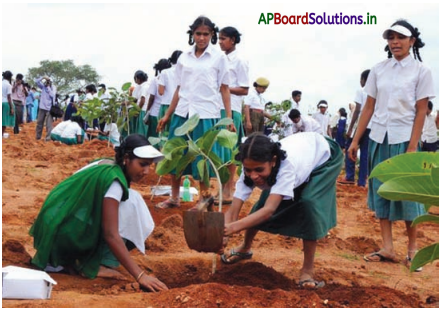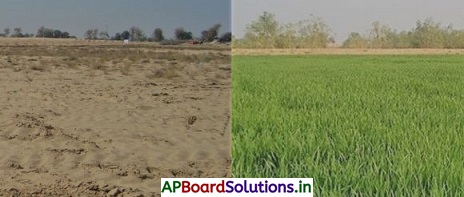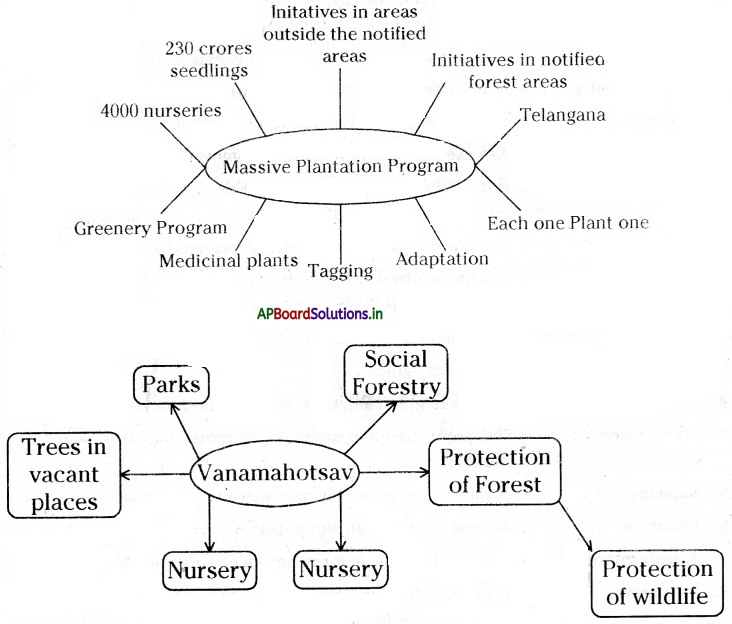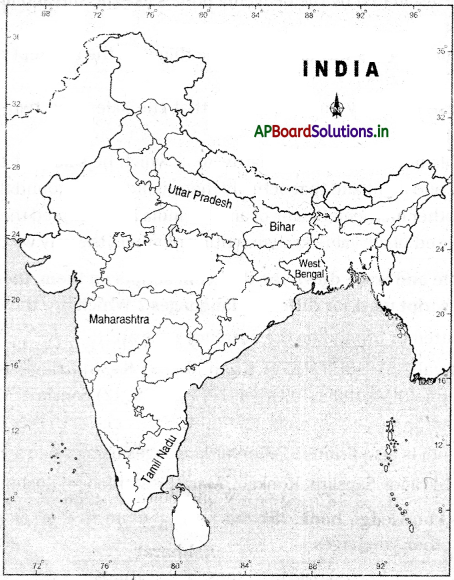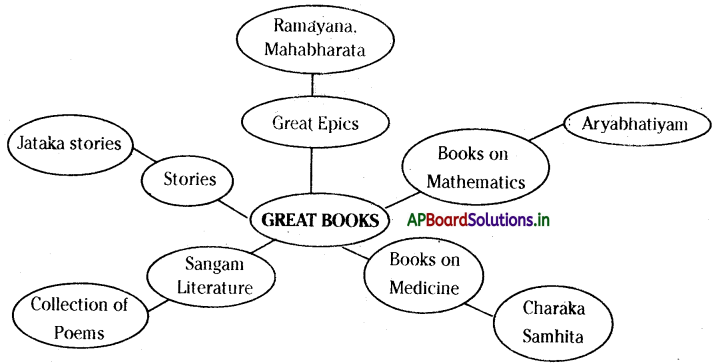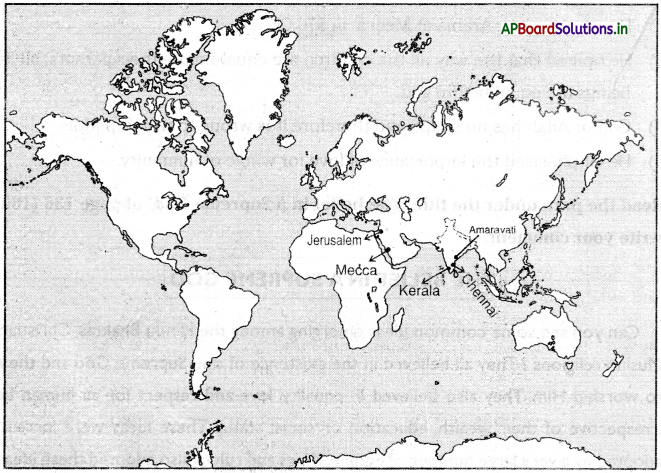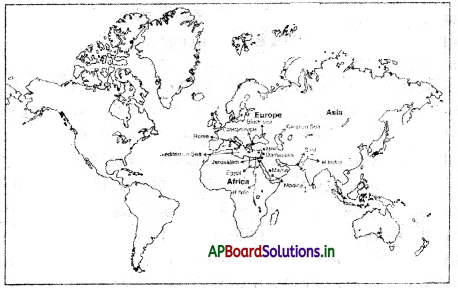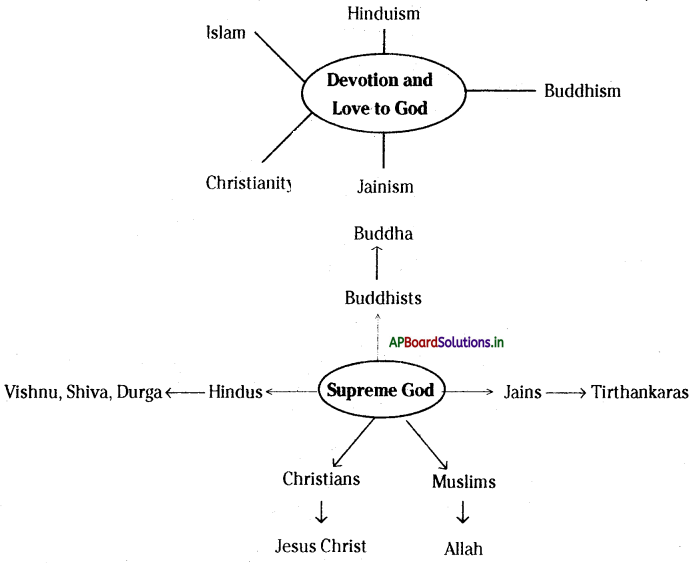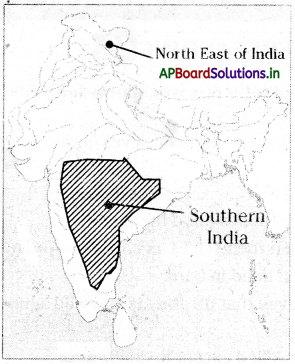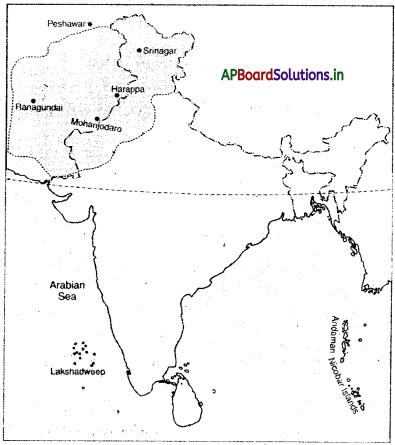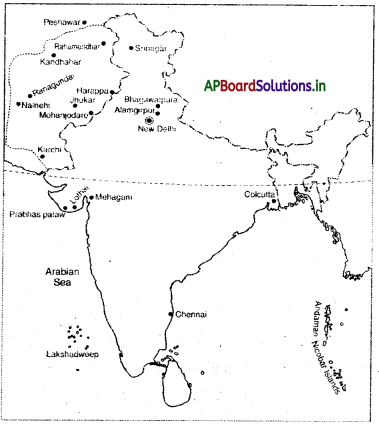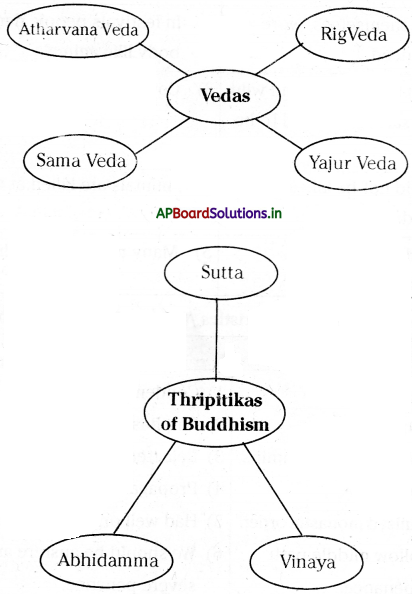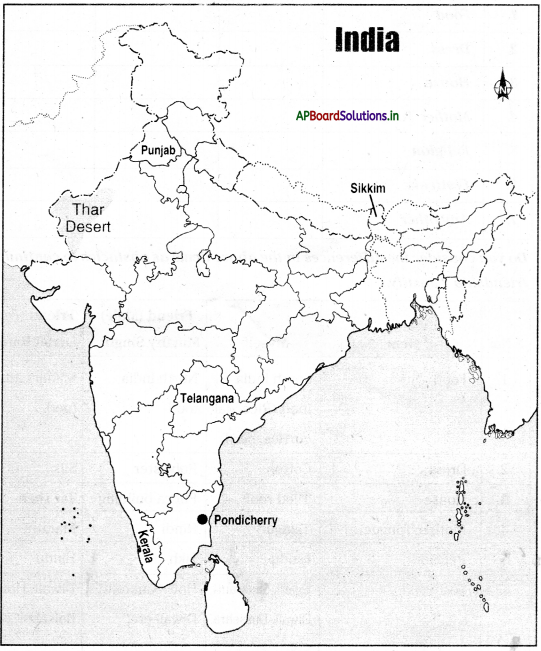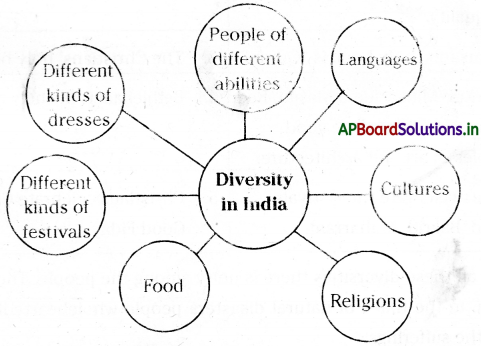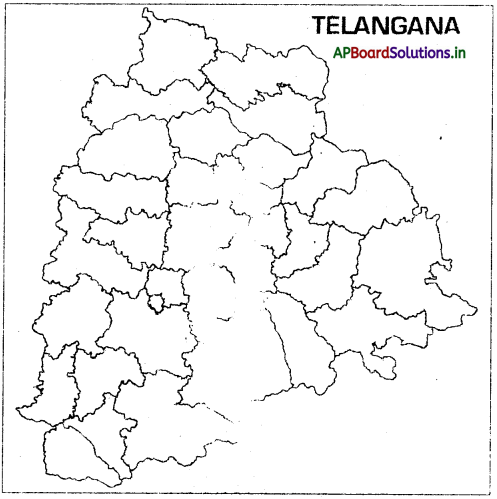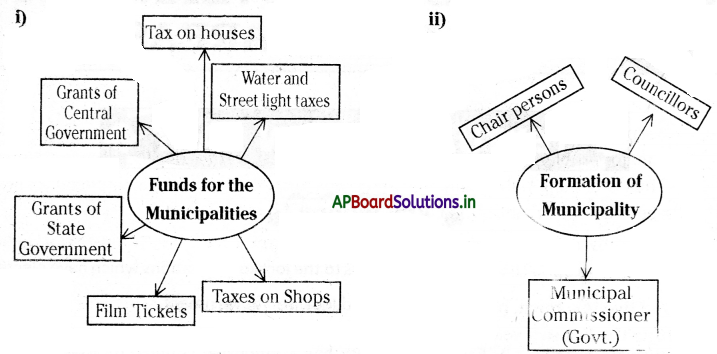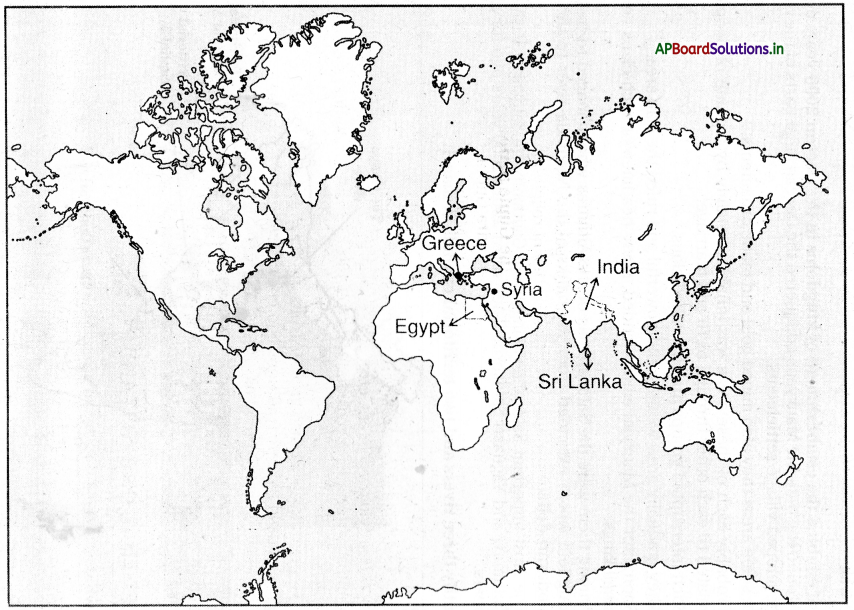Telangana SCERT TS 6th Class Social Guide Pdf 16th Lesson Towards Gender Equality Textbook Questions and Answers.
Towards Gender Equality– TS 6th Class Social 16th Lesson Questions and Answers Telangana
Question 1.
Is it correct to say tnat girls are naturally weaker than boys are ? Give reasons.
Answer:
- Some people feel that women by nature are physically weaker than men, they are more caring and loving and not the fighting type.
- And they are instinctly tuned to cooking, cleaning and stitching.
- There is a notion that they need to be protected by others – men.
- Women take care of children for they alone can love and care.
- That is why women do all the household work because they are naturally suited to it.
If you go deeply into each of these qualities you will find they apply equally to both men and women. For example, you will find both brave and cowardly men and also women. You will find many men who are very caring and loving and many women who may not be like that. Since women have been forced into these roles all these years we have grown to regard them as natural.

Question 2.
List the household jobs you, your brother or sister do?
Answer:
| The household work by me and my sister: | The household work done by my brother |
| 1. Brooming and cleaning our house. | 1. Marketing |
| 2. Cleaning utensils. | 2. Watering the plants . |
| 3. Cutting vegetables. | 3. Heavy works in the house. |
| 4. Stitching the torn clothes and | 4. Helping |
| 5. Helping my mother. | |
Question 3.
Make a list of ten employed women you know of personally. Get information about their work and earnings.
Answer:
| Name of the women | Employment | Earning per month |
| Anuradha | Sales girl | 4,500 |
| Sudha Rani | Upper Division Clerk | 20,000 |
| Pavani | Nurse | 12,000 |
| Srilakshmi | Designer (Architecture) | 30,000 |
| Aruna | Doctor | 60,000 |
| Sujatha | Teacher | 25,000 |
| Rama | Designer (botique) | 20,000 |
| Roja | Management Trainee | 25,000 |
| Harini | Software Engineer | 80,000 |
| Saroja | Accountant | 10,900 |

Question 4.
If you have any elder woman in the family who went to school some twenty years ago, find out their experience of schooling and compare it with that of your own times.
Answer:
My aunt Rajyalakshmi lives with us. In those days she studied 8th class. There were separate sections for girls and boys. Their seating arrangements were according to their heights. At the end of the year the student should write the examination and get pass marks for promotion into next class. Teachers used to punish the pupils when they get less marks. My aunt studied 2nd class two times and 3rd class two times.
Now we, the boys and girls are sitting in one section in our school. Our teachers teach us but do not punish us.They promote us even though we have less percentage of attendance. We share the work of the classroom equally.
Question 5.
Why do you think daughters are not given equal share of the property of the parents ?
Answer:
a) Discrimination is access to property:
- In our country most resources like land and factories are in the name of men.
- Even though the law provides that property of parents should be divided equally between all children (both sons and daughters), in actual practice very few girls get a share of their parents’ property which is usually given only to sons.
- As a result women have little or no control over any productive resource like land, shop or factory.
- The situation in Telangana in recent times is relatively better.
- This is due to laws made in the state in 1980s which made it mandatory that the ancestral property of parents should be equally divided between sons and daughters.
b) Reasons of above discrimination:
- In my opinion parents think that their responsibility is to bring up the girl child and persuade her to marry. At the time of marriage parents give property in the form of dowry to her husband.
- Later the property is given to only their son. Because they think he will look after them at their old age.
- In our country most resources like land and factories are in the name of men. It is because men can manage these things very easily.
- Very few women actually get educated enough to be employed in offices, schools and hospitals. Most of the women are not educated enough to understand the law. So they are not getting equal share with men.
Question 6.
Go to some Self – Help Groups in your area and find out how they help women to gain independence and dignity.
Answer:
There are eleven self – help groups in our areAnswer: They started these groups with a small amount of revolving funds. They opened their group account in bank. Later they saved a reasonable amount Rs. 200 or 300 per head for every month in the account.
After certain period the government sanctioned them matching grant, The needy persons of the group may take loan from the group with nominal interest and pay in easy equal instalments. In recent years the government sanctioned many loans for cattle etc., for ‘Pavala Vaddi’. In this way the SHGs help the women to gain independence and dignity.

Question 7.
Read the second para of page 86 (135) (Some people feel that ………….. suited to it) and write the answer. Is it proper to say that women are weaker than men ? Write your opinion.
Are Women Naturally Like That ?
Some people feel that women are naturally physically weaker than men. They are more caring and loving and not quarrelsome. They are, by instinct, tuned to cooking, cleaning, stitching and other household work. It is belived that they need to be protected by men. Women take care of children because they can only love and care.That is why because women do all the household work because they are naturally suited to it,
Answer:
Women are considered as the perfect homemakers in the world. In India, women were never given any right of liberty and equality. Men treated then in a humiliated manner. Even though they are working outside the home, they have to work in the houses also. This typ’e of violation should be stopped.
I. Conceptual understanding
Question 1.
Why do you think there is this difference in the way boys and girls are brought up ?
Answer:
From their very birth, girls and boys are brought up according to these discriminatory ideas.
- For example, we find that the proportion of women in Indian population is constantly decreasing. In 1951 there were 946 women for every 1000 men. In 1981 it declined to 934 per thousand men. After that, it rose to 940 women per thousand men by 2011.
- Normally equal number of girls and boys should take birth.
- If the proportion of girls is less, it means that girls and women are not able to live a healthy life in our country and are dying earlier than men.
- In some families, young girls do not get sufficient nutritious food.
- So they are not able to survive when they meet with any disease.
- Girl children in a few other families face discrimination do not receive proper medical treatment.
- In recent times, the proportion of girls is less also due to foeticide, a practice in which girls are killed before they are born.
Question 2.
Why do you think people like Malini earn less than hundred rupees a day even though they work hard for several hours ?
Answer:
- Most of the women who are without proper educational qualifications are forced to do physical labour in the fields of mines or as domestic servants in houses of the rich people.
- Not only are these kinds of work physically back breaking and exhausting, but the women doing them often face lack of dignity and respect and security.
- They have to face insults and abuses all the time.
- Malini also had no proper qualification. So she is doing less demanding job. She gets only hundred rupees. But she is not treated with some respect.
Question 3.
“The work done by women in the household is not at all recognised”. Explain.
Answer:
If we look at the daily routine of any woman we will realise that they are working all the time. But most of the time the work they do is not recognised and not paid for. Even though everyone can see them working hard, their work remains invisible. Women are not charging for the domestic work at home.
They won’t charge for cleaning, cooking, making pickles, taking care of children, teaching children, nursing the sick, stitching clothes, filling water, purchasing provisions etc. Instead they are constantly abused for not doing this work on time or not to the taste of others. On the otherhand most of the work that men do is paid for and they control the money and spend it as they wish.
Question 4.
What are the two kinds of differences between men and women?
Answer:
There are two kinds of differences between men and women. Firstly, there are natural physical differences, but these need not cause discrimination against women. The second kind of differences are made by our society which tries to subordinate women to men and treat them unequally. Differences which lead to such inequality and discrimination are called ‘socially caused differences’ or ‘gender differences’.

Question 5.
Which jobs are ‘reserved’ for women?
Answer:
In actual fact nearly eight out of every ten Indian working women work in the fields. They till the land, they do the seedling, weeding, transplanting, harvesting, threshing and countless jobs. Of course it is also true that many farm jobs are ‘reserved’ for women – like transplanting rice, weeding or plucking groundnut pods. Women do these and many other jobs also in agriculture. A large number of farms are fully managed by women farmers only as the men go out in search of work in factories and towns.
II. Reading the Text (given), Understanding and Interpretation
Question 1.
How are girls treated differently from boys ? Can you make a list of discrimination that girls face in our houses ?
Answer:
From their birth, girls and boys are brought up according to there discriminatory ideas. Here are some statements about how boys and girls are treated.
- Boys are encouraged to go out, make friends, play freely while girls are encouraged to be at home and do household work.
- Boys are encouraged to play with toys like guns, cars and trucks while girls are encouraged to play in the house with dolls and toys related to kitchen or household articles.
- Boys get to wear dresses which allow them to run or climb or go about freely while girls get to wear dresses which cover their entire body and obstruct their movement.
- In villages where there is no access to certain higher classes, boys are encouraged to go to school in the neighbouring villages and study while girls are not sent.
- Various careers for the boys are planned while girls are told that they have to get married and settle as housewives.
Question 2.
The majority who leaves without completing primary education are girls. “Why”?
Answer:
- In our culture a girl is not valued as much as a boy.
- Even many women in our social institutions don’t want a girl child.
- Because of poverty the dropouts are many, particularly in scheduled castes, scheduled tribes and backward sections.
- Domestic work, care of siblings, work in the houses of others, child marriages etc., are the causes for the majority of girls leaving schools without completing primary education.

Question 3.
How is the discrimination in education ?
Answer:
- One of the aspects of discrimination is low education among women.
- Girls are not encouraged to go to school and are kept at home to do the household work or work in fields and shops.
- The girls who go to school have little time to study at home as they have to do a lot of household work after school time.
- Even when girls manage to go to school and study, they are discouraged from taking subjects like maths and science which are considered more apt for boys
- Girls are told that they can only learn subjects like literature and ‘home science’.
- In fact many schools practice gender bias by not allowing boys to learn subjects like ‘home science’ and forcing girls alone to learn them.
- This kind of discrimination against girls education has resulted in very low literacy skills among women. For example in Telangana only six out of ten women can read and write.
- Very few women actually get educated enough to be employed in offices, schools and hospitals.
III. information skills
1. Read the following table.
Proportion of women in Indian population
| Year | Men | Women |
| 1951 | 1000 | 946 |
| 1981 | 1000 | 934 |
| 1991 | 1000 | 969 |
| 2011 | 1000 | 988 |
Now answer the following questions.
1) How many women were there for every thousand men in 1951?
Answer:
There were nearly 946 women for every thousand men.
2) How many women were there for every thousand men in 1981 ?
Answer:
There were 934 women for every thousand men.
3) In which year the situation had improved ?
Answer:
In 2011 the situation had improved, there were 988 women for every thousand men.

4) In which year the situation is very bad ?
Answer:
In 1981 the situation is bad, there were only 934 women for every thousand men.
5) How many women were there for every thousand men in 2011 ?
Answer:
988.
IV. Reflection on Contemporary Issues and Questioning
Question 1.
Give your views on the future of the status of women in IndiAnswer:
Answer:
- Women were oppressed in a variety of ways and assigned a subordinate position in the family.
- They were the victims of many customs and traditions.
- Men-and women have some abilities and intelligence.
- Hence there should be no discrimination between the two.
Future status of women in India:
- Slowly they realised this injustice and now they are questioning, protesting and revolting against ihe male dominant values.
- Today women are asking for liberation but not merely protection.
- Women are asking for empowerment but not welfare measures.
- Now they are participating and voting in elections in large numbers.
- Many women have acquired high education and are entering into jobs which were earlier considered reserved for men only.
- Presently, some of the leading scientists, mathematicians, diplomats, engineers, etc. are women.
- Women are now also recruited into the police, army, navy and airforce and there are many women pilots today. Infact we have women who are train engine drivers.
- This has been possible because women have fought to get higher education and also broken gender biases in many professions.
Question 2.
What are the measures do you suggest to lessen the burden on the girl child and to encourage her to persue studies ?
Answer:
- All human beings, men and women are equal and possess equal capabilities. So girls are encouraged to study as boys.
- Government must provide scholarships to girls. Then dropout rate of girls is decreased.
- We need a society where women are free and respected as much as men are.
- Social inequalities can be demolished.
India can truly develop only when women are regarded as equal, when they could freely exercise their rights and contribute nation’s progress.

Question 3.
What are the other professions that are commonly taken up by women ?
Answer:
- Women are marginalised in the world of work for several socio-cultural reasons. Most of the female workers are marginal workers and are mostly engaged in the low-paid primary sector.
- It is true that many farm jobs are reserved for women – like transplanting rice, weeding, or plucking groundnut pods etc.
- Most of the women who are without proper educational qualifications are forced to do physical labour in the fields, or mines or as domestic servants in houses of rich people. In the last few decades many women have acquired high education and are entering into jobs which were earlier considered reserved for men only.
Question 4.
Write some more discrimination you observed or experienced ? Discuss. Suggest remedies to keep discrimination away.
Answer:
I observed in some areas, girls are kept at home to look after the children but boys are sent to school to study with uniform, shoes and other comforts are provided to them. In severed families there is open discrimination between boys and girls in food, education, play and medical care.
The enrolment of girls at all levels of education is low compared to boys. The majority of children who leave school without completing primary education, Iney are sent to fields to pluck cotton and mirch. Among girls the dropout rates are much higher. In rural areas only 9% girls enrolled in class I reach class X. So the Government takes special measures to neutralise the social, economic, educational and political disadvantages accumulated for centuriides.
VI. Appreciation and Sensitivity
Question 1.
Explain the statement : “Fewer girls, fewer women.”
Answer:
All this discrimination has had very sad consequences. For example, we find that the proportion of women in Indian population is constantly decreasing. In 1951 there were 946 women for every thousand men. In 1981 it declined to 934 per thousand men. After that it rose to 940 women per thousand men by 2011. In 1991 . there were 969 women to thousand men. The situation has improved and in 2011. There were 988 women to thousand men.
Project:
Find out from your school records how many girls are enrolled in class 1, 5, 8 and 10. Does it support the view that more boys complete schooling than girls do? Information of enrollment of girls in our school as per our records (2011 – 2012)
| Class | Girls | Boys |
| I | 18 | 16 |
| II | 16 | 21 |
| III | 20 | 25 |
| IV | 19 | 26 |
| V | 25 | 34 |
This information supports the view that more boys complete schooling than girls.
2. Find out from popular magazines about w- men who have entered professions which were earlier considered only for men. Prepare an album of their life arid struggles.
Answer:
A) Susanna Arundhathi Roy : Writer and Social activist
She was born on 24-11-1961 in Bengal and grew up in Aymanam village, Kottayam, KeralAnswer: She is the first woman to have won Britain prestigious Booker Prize in 1997 for her writing “The God of Small Things”

She is an inspirator to all those who speak up against the powers in support of the poor and the oppressed. She has also received Sydney Peace Prize in 2004.
B) Sakuntala Devi : A Human Computer
She was born in Bangalore. Karnataka in 1939. She has extraordinary talents in solving-complex Mathematics without Mechanical aid within seconds.
Many countries have invited Sakuntala Devi to demonstrate her extraordinary talent. She got included her name in the Guinness Book of world records (P.No. 26 of 1995)
C) Anne Besant: Social worker

Annebesant was an Irish lady, born in London. She was a famous social worker, educationalist and journalist. She came to India in 1893. She founded Home Rule League and revived Theosophical Society. She established Indian Boy Scouts Association. She died at the age of 86.
D) M.S. Subbulaxmi: Musician

Madurai Shanmukhavadivu Subbulaxmi and Nightingale of Carnatic Music. Born in Madurai, Tamil Nadu on 16-09-1916.
She had received many awards :
Padma Bhushan in 1954,
Raman Magsaysay award -1974
Padma Vibhushan -1975
Bharat Ratna in 1998.
She passed away at 88 years of age.
E) Kiran Bedi – Law and Order

She born on 09-06-1949 in Amritsar, Punjab in IndiAnswer: First woman officer in the l.P.S. retired. She has received Raman Magsaysay award in 1994.
F) Karanam Malleswari :

Indian weight lifter, She is the first Indian woman who won Olympic medal in Sydney Olympics in 2000. She was awarded Rajiv Khel Ratna award in 1994-95.
G) Medha Patkar : Social Activist

She was born on 01-12-1954 in Mumbai. She is leading ‘Narmada Bachao Andolan’. She has received ‘Right Livelihood award in 1991.”
H) Tasleema Nasrin : Feminist
Born on 25-08-1962 in Bangladesh. She works to build support for Secular Humanism. She faced a number of physical attacks for her writing ‘Lazza-.
Sasi Prabha – woman driver – 28 years.
She has become first woman Bus driver in the Union territory of Pondichery in a private transport company.
J) Indira Gandhi – States woman
She was born in Allahabad – first woman Prime Minister of India – an important world states woman. At the age of 13 years she originated a ‘Vanara Sena’ to fight with the Britishers.
She was famous for her works as Prime Minister – Nationalisation of banks, liberation of Bangladesh and 20 point programme for the upliftment of the poor. In 1971 she was honoured with ‘Bharatha Ratna’. She was assassinated on 31-10-1984 by her own guards.
K) Kalpana Chawla : Astronaut (17-3-1962 to 01-02-2003) Indian American Astronaut-a mission specialist on the space shuttle ColumbiAnswer: She was one of the seven crew- mem bers killed in the ‘Space shuttle Columbia disaster’. She w?as awarded
- Congressional space medal of honour.
- NASA space flight model.
- NASA distinguished service medal.
3. Consult parents in your village/locality and collect information about dropouts from schools.
| Name of the Student | Category SC/ST/BC/OC/Minority | Drop out in which class | Reasons for dropouts |
| | | |
Which category students are more in drop outs ? What are the reasons ? Analyse and discuss in the classroom.
Answer:
Student self exercise.
TS 6th Class Social 16th Lesson Notes – Towards Gender Equality
- Employment : Some one is paid to work for an organization.
- Literacy : The ability to read.
- Property Rights : Acquiring right on their owned property.
- Sex Ratio : The relation between two groups i.e. male and female.
- Bias : A strong feeling in favour of or against one group of people or one side in an argument, often not based on fair
- judgement or an interest in one thing more than others.
- Gender : The fact of being male or female issues of class, race and gender.
- Discrimination : The process of distinguishing one person from another person on the basis of caste, creed and colour is called discrimination.
- inequality : The unfair difference between groups of people in society. When some have more wealth, status or opportunities than other.
- Society : A particular community of people who share the same customs, loans, etc. or people in general, living together in communities.
- Deteriorating : To become work or serious condition. Eg : Her health is deteriorating rapidly.
- Exhausting : Making you feel very tired or the state of being very tired.
- Provisions : Supplies of food and drink especially for a long journey or the act of supplying somebody with something that they need or want.
- Harvesting : The time of year when the crops are gathered in on a farm etc,, the act of cutting and gathering crops.
- Weeding : A wild plant growing where it is not wanted especially among crops or garden plants.
- Transplanting in agriculture : Instead of scattering seeds on the ground from which plants, sprouts, saplings are grown and then planted in field.
Mind Mapping:

